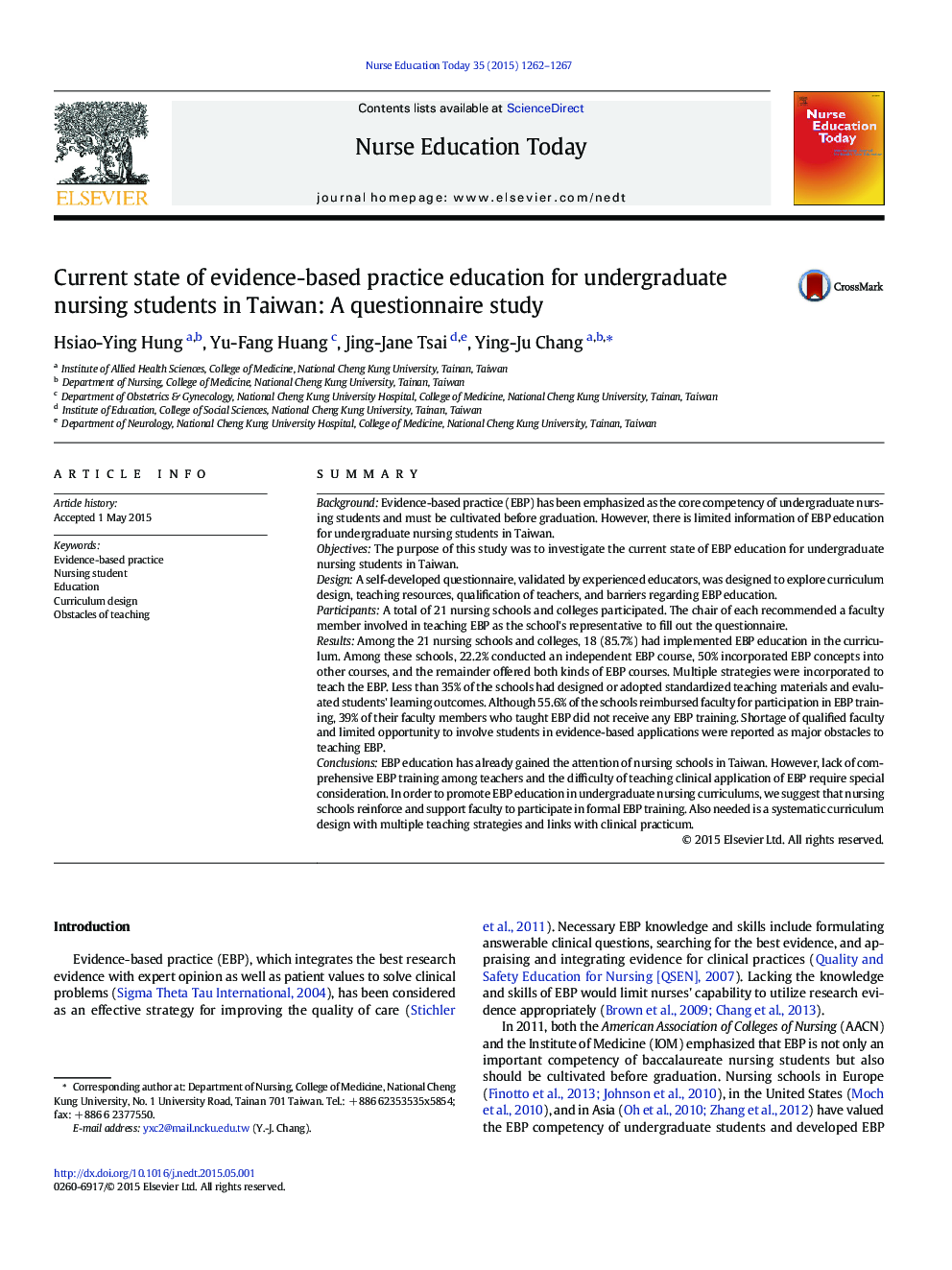| کد مقاله | کد نشریه | سال انتشار | مقاله انگلیسی | نسخه تمام متن |
|---|---|---|---|---|
| 367948 | 621552 | 2015 | 6 صفحه PDF | دانلود رایگان |
• EBP education has already gained the attention of nursing schools in Taiwan.
• Shortage of qualified faculty and difficulty of teaching EBP clinical application were major obstacles to teaching EBP.
• A systemic curriculum design with multiple teaching strategies and links with clinical practicum are needed in the future.
SummaryBackgroundEvidence-based practice (EBP) has been emphasized as the core competency of undergraduate nursing students and must be cultivated before graduation. However, there is limited information of EBP education for undergraduate nursing students in Taiwan.ObjectivesThe purpose of this study was to investigate the current state of EBP education for undergraduate nursing students in Taiwan.DesignA self-developed questionnaire, validated by experienced educators, was designed to explore curriculum design, teaching resources, qualification of teachers, and barriers regarding EBP education.ParticipantsA total of 21 nursing schools and colleges participated. The chair of each recommended a faculty member involved in teaching EBP as the school's representative to fill out the questionnaire.ResultsAmong the 21 nursing schools and colleges, 18 (85.7%) had implemented EBP education in the curriculum. Among these schools, 22.2% conducted an independent EBP course, 50% incorporated EBP concepts into other courses, and the remainder offered both kinds of EBP courses. Multiple strategies were incorporated to teach the EBP. Less than 35% of the schools had designed or adopted standardized teaching materials and evaluated students' learning outcomes. Although 55.6% of the schools reimbursed faculty for participation in EBP training, 39% of their faculty members who taught EBP did not receive any EBP training. Shortage of qualified faculty and limited opportunity to involve students in evidence-based applications were reported as major obstacles to teaching EBP.ConclusionsEBP education has already gained the attention of nursing schools in Taiwan. However, lack of comprehensive EBP training among teachers and the difficulty of teaching clinical application of EBP require special consideration. In order to promote EBP education in undergraduate nursing curriculums, we suggest that nursing schools reinforce and support faculty to participate in formal EBP training. Also needed is a systematic curriculum design with multiple teaching strategies and links with clinical practicum.
Journal: Nurse Education Today - Volume 35, Issue 12, December 2015, Pages 1262–1267
